A temple dedicated to Huitzilopochtli, the war god, and to Tlaloc, god of rain and agriculture, dominated the Sacred Precinct of the great Aztec capital, Tenochtitlan. Commonly known today as the Templo Mayor (Great Temple), its two tower-shrines soared high above a base measuring roughly 328 by 262 feet.
Typically, Aztec temples were expanded over time by building upon their predecessors, using the preceding building as the base for each larger new one. The Templo Mayor was no exception. Initially constructed immediately following the founding of Tenochtitlan in A.D. 1325, it was rebuilt six additional times during its nearly two centuries of existence. Subsequent versions of the structure have been excavated, but the first has not, because the high water table of Tenochtitlan or Mexico City — the Aztec city’s nucleus was a swampy island in Lake Texcoco — makes excavation exceptionally difficult if not impossible. Moreover, the relatively modest original structure was probably built of long-perished dirt and wood.
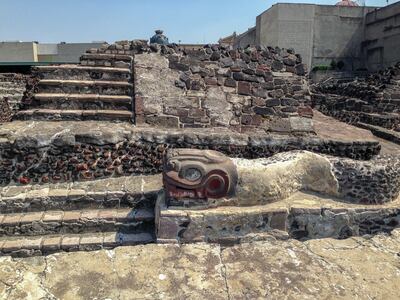
When the Spanish conquistadors conquered Tenochtitlan in 1521, they immediately destroyed the Templo Mayor to make room for what would become the principal Christian church in the capital of New Spain. They reused the stones of the Aztec shrine for its construction. Today’s Metropolitan Cathedral of the Assumption of the Most Blessed Virgin Mary into Heaven — on the Zocalo, the main plaza of Mexico City — sits atop the former Sacred Precinct of the Aztecs.
This practice of erecting a sacred place for the victors upon the ruins of a shrine belonging to the vanquished can be illustrated many times from world history. (Perhaps it happened even in Tenochtitlan. We simply don’t know.) A few examples should suffice:
• The Santo Domingo Convent in Cusco, Peru, former capital of the Inca Empire, rests upon a foundation constructed from the stones of the almost inconceivably opulent Qorikancha, the Golden Temple, the Incas’ most important sanctuary until the Spaniards seized Cusco in 1533.
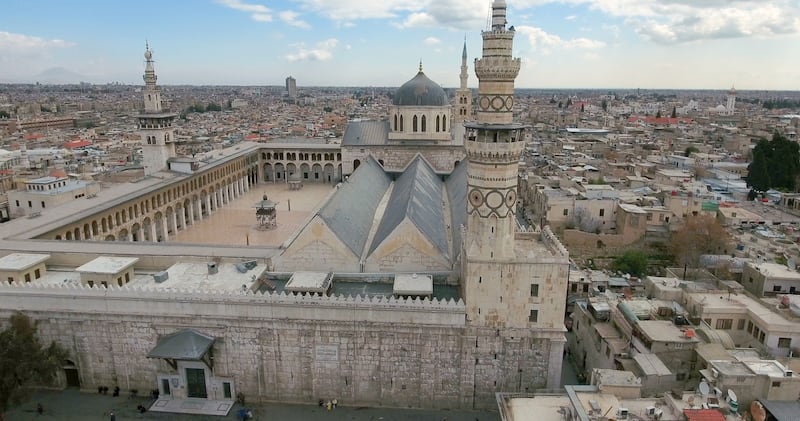
• The Umayyad Mosque, or Great Mosque of Damascus, stands on a site that has hosted worship since roughly 1000 B.C., and perhaps longer than that. A temple to Baal (Ba‘al Haddad or Lord Haddad), the Canaanite god of rain and thunder, was replaced under the Romans by a huge temple to Jupiter, whom they associated with thunderbolts. At the end of the fourth century, the Christian Roman emperor Theodosius I transformed Jupiter’s temple into a cathedral, which was eventually dedicated to St. John the Baptist. That cathedral was razed under Muslim rule, and today’s enormous mosque was completed in A.D. 711. It contains a shrine devoted to John the Baptist.
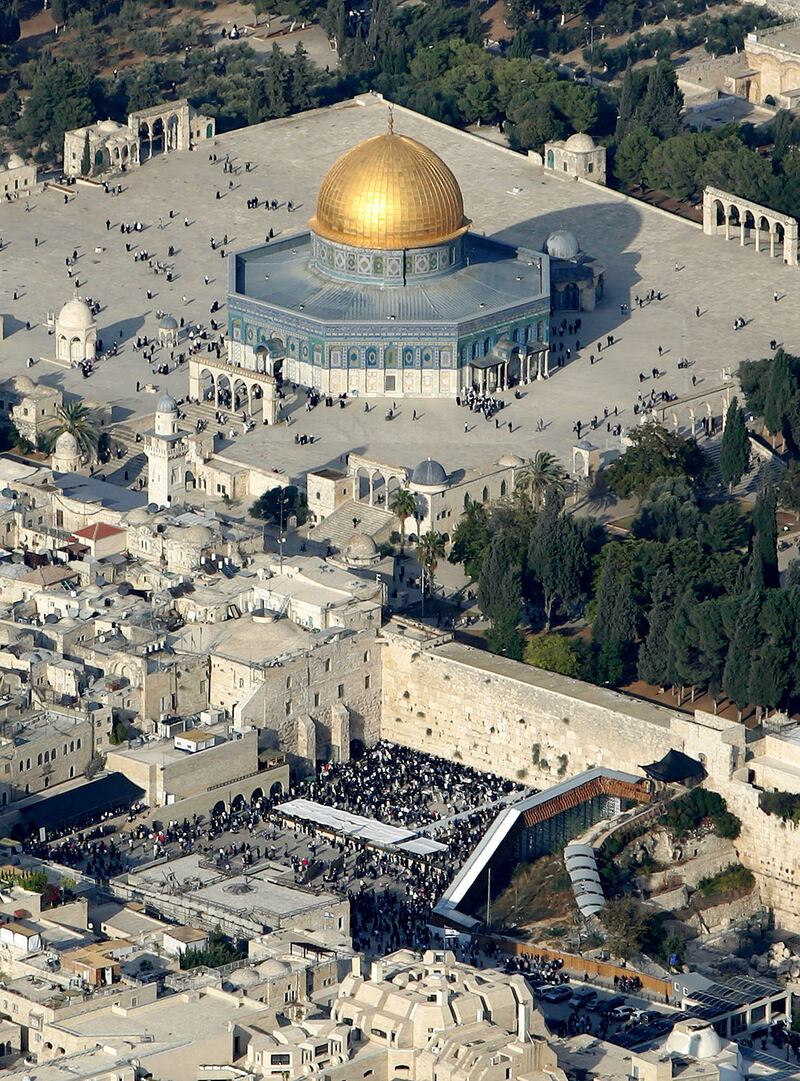
• The Muslim caliph Abd al-Malik erected the Dome of the Rock on the Temple Mount in Jerusalem, where first Solomon’s temple and then Herod’s had stood. As a disdainful polemical gesture against Judaism, Byzantine Christians had turned the ancient temple precincts into the city’s garbage dump; the Muslims cleared the trash and reclaimed the site. Today, among the principal themes inscribed on the walls of the Dome of the Rock is the Muslim affirmation of the prophethood of Jesus, coupled with a denial of his divinity. The Dome of the Rock is itself a polemical statement.
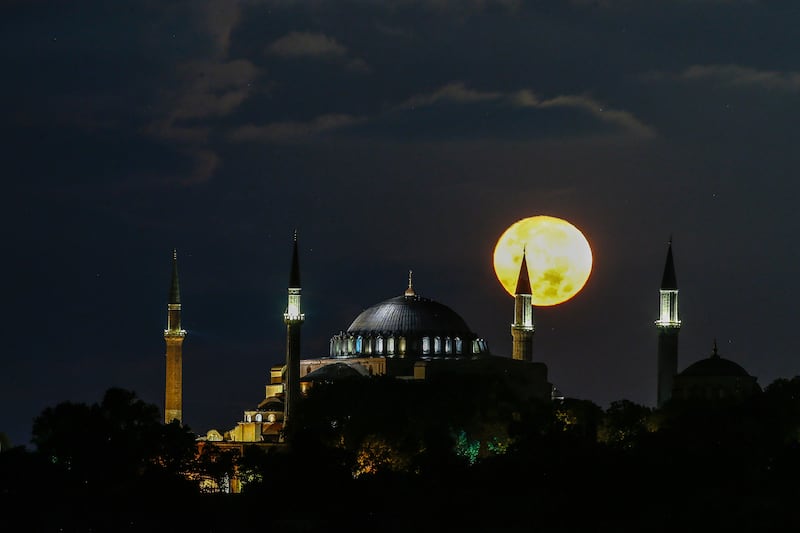
• Sometimes, plainly, the shrine of a preceding faith isn’t destroyed but repurposed. The great Hagia Sophia, dedicated by the Byzantine emperor Justinian I in A.D. 537 as a Christian church — the largest in the world for almost exactly a thousand years — for his capital of Constantinople, became the principal mosque of Istanbul in 1453, when the Ottoman Turks captured and renamed the city. In 1935, the secular Republic of Turkey made it a museum. In early July 2020, amidst international controversy, Turkey’s Islamist President Recep Tayyip Erdogan reclassified it once again as a mosque.
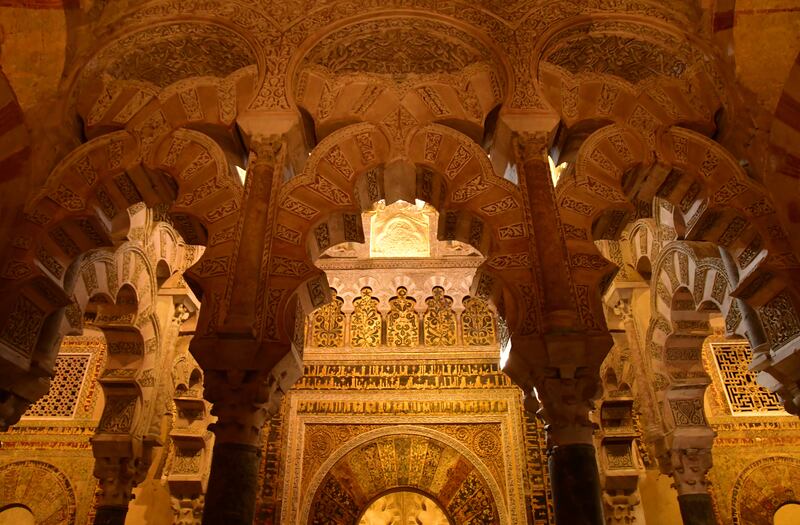
• Spain’s beautiful Cathedral of Our Lady of the Assumption, in Cordoba, was originally founded by the Muslim amir Abd al-Rahman I in A.D. 785 as a mosque, on the site of a church dedicated to St. Vincent that he had purchased from the Christians and destroyed. In 1931, Stalin’s Communist regime transformed St. Isaac’s Cathedral, in St. Petersburg, Russia, into an anti-religious museum. In 1932, the city’s Kazan Cathedral was officially renamed the Museum of the History of Religion and Atheism.
Such destructions and transformations are variously motivated: Often, the preceding shrines simply occupied desirable real estate. “Location, location, location!” Often, too, new rulers seek to celebrate their victory, to disrupt prior loyalties, or to co-opt the reverence associated with a holy place.
Daniel Peterson teaches Arabic studies, founded BYU’s Middle Eastern Texts Initiative, directs MormonScholarsTestify.org, chairs interpreterfoundation.org, blogs daily at patheos.com/blogs/danpeterson, and speaks only for himself.

